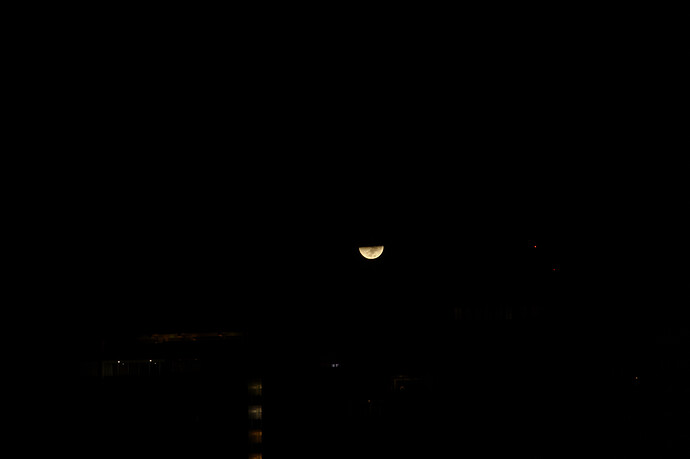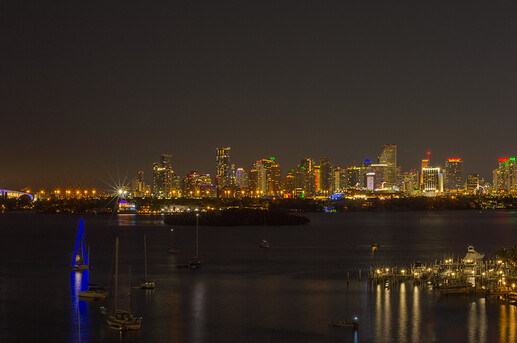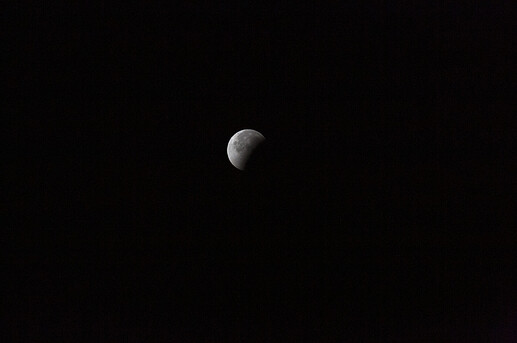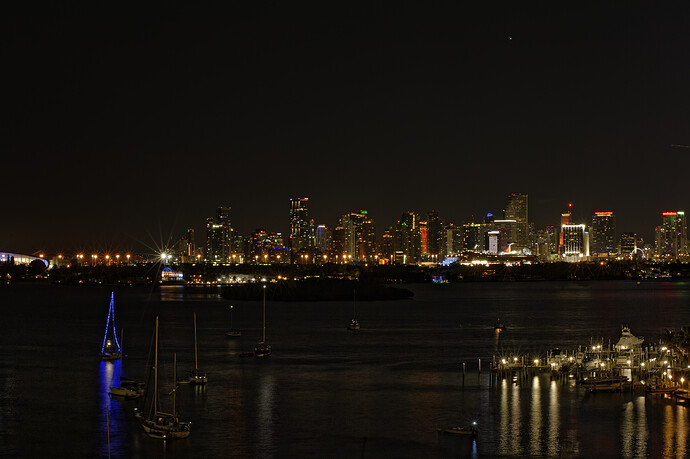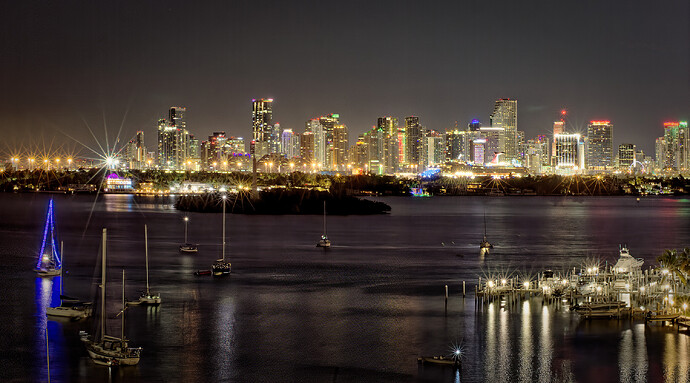Last night I tried to take a photo of the Miami skyline, with a setting moon above it. Considering that the skyline is a typical night shot, and the moon is still illuminated in bright sunlight, this was impossible. When I got a decent image of the moon, the skyline was almost all black, and when I got a reasonable exposure on the skyline, the moon was totally blown out. I tried using Photomatix, with an HDR using 5 bracketed photos, but the result wasn’t at all pleasing. I gave up on this, and tried something I thought was easier, just the skyline.
Without the moon in the photo, this seemed easier. I will attach the five NEF images here of the skyline. If I don’t want blown highlights, the brightest image is out, but if I drop down to where the “city” looks good, the water and the boats start getting very dark. Then there’s the sailboat with the blue lights on the rigging - the longer exposure gets too blurry, as the boat is moving back and forth because of the waves.
I really have two questions - how to get a nice photo of both the “dark” ground, and also have the moon show up nicely? Or do I just write this off as something impossible.
My other question is which image to select when none of my images have captured the full range of brightness?
_MJM2081 | 2020-12-22-{Moon over Miami}.nef (16.3 MB)
_MJM2082 | 2020-12-22-{Moon over Miami}.nef (16.6 MB)
_MJM2083 | 2020-12-22-{Moon over Miami}.nef (16.9 MB)
_MJM2084 | 2020-12-22-{Moon over Miami}.nef (17.2 MB)
_MJM2085 | 2020-12-22-{Moon over Miami}.nef (17.6 MB)
I will see which image I think works best for me, and how well I can get it to show. There are too many restraints I was fighting against. The lens is “only” f/3.5, not very fast. I could have raised the ISO a lot more, but I went as far as I dared. The shutter speed was bracketed, but I wanted a faster shutter speed to freeze the boats better. Actually, the boat with blue rigging is what prompted me to take this other shot, after I gave up on the moon photo.
Camera was my Nikon Df. The lens is an ancient manual focus “E-Series”, Nikon’s bargain lenses back in the 1980’s. Camera was mounted on my tripod, and set to take five bracketed exposures, with one stop separation between images.


